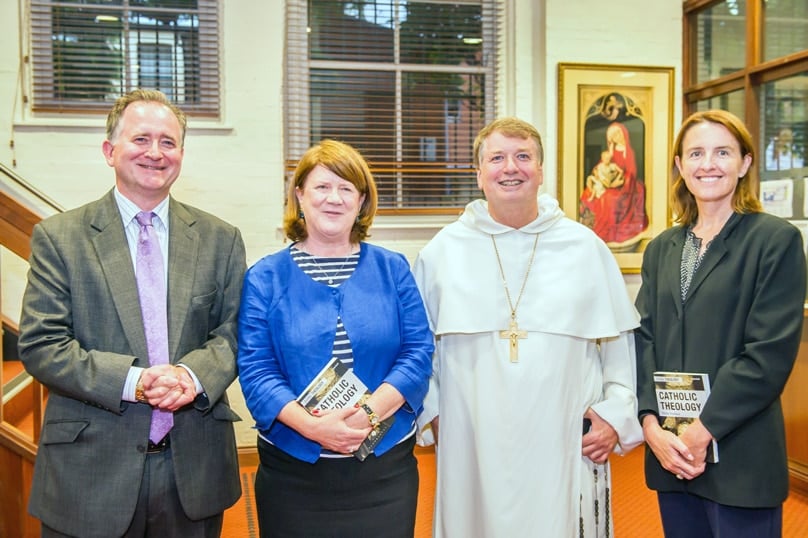
I will begin this address with the disclaimer that I am not one of those academics who spend their lives sitting on ecumenical committees. I am however aware that the fashionable buzz- word in this field is “receptive ecumenism” – the idea that instead of speaking about what other traditions need to learn from our own tradition, we ask our ecumenical interlocutors what they believe our tradition needs to learn from their tradition, or to put the matter a little less polemically, we ask our ecumenical partners what gifts from their tradition we might find useful.
As an academic I can see some value in this – it is like showing a colleague an article one has written and saying “tell me what you make of my argumentation?” Do you think the thesis has legs? Are there gaps I have missed? I am so close to what I have written I lack the capacity to stand back from it and judge it.
At some point in the ecumenical conversation however members of the different denominations will run up against issues in fundamental theology where a choice for one or other position will lead one down divergent theological paths making any future unity a doctrinal impossibility. To give some contemporary examples from the field of fundamental theology: base-line questions include: do we read the Scriptures as normative for all times or not, do we believe in the priority of logos over ethos or not; and if we believe in the priority of ethos or praxis as liberation theologians do, have we reached that position because we follow the anti-intellectual orientation of Martin Luther or the anti-metaphysical orientation of Immanuel Kant or some kind of dialectical metaphysics borrowed from Friedrich Hegel and Karl Marx?
Then there are the base-line questions about how nature, grace and history are related, how faith and reason and history are related, how scripture and tradition are related and where we stand on issues in linguistic philosophy that impact upon our understanding of how meaning is mediated and the use of doctrinal formulae to this end. Last but far from least there is the question of whether or not theology requires the mediation of the social sciences. As Charles Davis (who was a big name in English Catholic theology in the 1960s) put the question: is theology the critical self-consciousness of Christian praxis or does theology begin with the belief that truth has already been given to us?
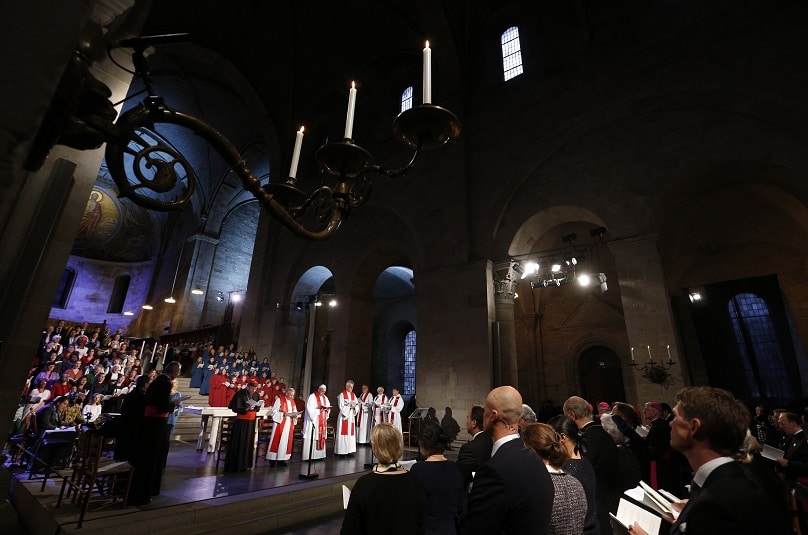
I mention these base-line issues in fundamental theology because it seems to me that we are currently in a situation where Catholics as well as members of Eastern Orthodox churches, Lutherans, Anglicans and others, frequently find themselves divided across rather than along, confessional lines precisely because of different answers to these base-line questions. My own personal experience has been that I am much closer to people who share my own base-line theological assumptions, who can come from a diverse array of Christian denominations, than I am to fellow Catholics who start from different and indeed, opposing base-lines.
To draw an analogy, if one looks at the membership of the Australian Liberal Party and the Australian Labor Party one can find that a high Tory in the Liberal Party has much more in common with the typical member of the New South Wales Labor Right than he does with the libertarians in the Liberal Party and similarly the member of the New South Labor Right will find the typical Christian Tory in the Liberal Party to be a much more comfortable bed-fellow than someone from the socialist Left faction of the Labor Party. But these two types – the person from the New South Wales Labor Right and the God, Queen and Country Tory in the Liberal party have ended up in different political parties because of factors which are usually not intellectual but issues of personal family history and class background. I think that a similar kind of situation currently exists in our different Christian traditions. A Catholic who believes that scripture is normative for one’s faith and practice is closer to a Sydney Anglican in matters of belief and practice than he is to a fellow Catholic who says that what is written it the Gospels needs to be re-contextualised with reference to contemporary social theory.
This sociological reality became very clear to me when I was a student at Cambridge. My biggest supporters in the Divinity School were all Anglicans. My Anglican supervisor, Professor John Milbank, was said to be running a “witness protection service” for doctoral students who from a variety of different Christian traditions, including Calvinist, Anabaptist, Anglican and Catholic, all needed protection because we were not prepared to genuflect before a statue of Immanuel Kant, that is to say, we were all united in our opposition to 18th century conceptions of rationality, especially to the Kantian idea that faith and reason could never be integrated. We were regarded as radicals because we rejected the authority of the Kantian court. We stood our ground and Milbank offered us protection in his academic nursery for all kinds of creedal Christians. We all became friends and we did have many very genial conversations which were rather like an exercise in receptive ecumenism, though we never called it that.

What I would like to propose is that in some cases unity is impossible because of the different base-line choices in fundamental theology, but in many cases unity is possible if we can round up all those who share the same or similar base-lines across the denominations and engage in an exercise which Professor Hans Boersma, who holds the Chair in Theology at Regent College in Vancouver, calls “re-weaving the tapestry”. Boersma associates himself with the Reformation tradition in theology and worships within a Reformed community, but if one reads his books one gets the strong impression that his favourite theologians of the present and last century are Joseph Ratzinger, Henri de Lubac and Yves Congar.
In his book Heavenly Participation: the Weaving of a Sacramental Tapestry, Boersma develops the thesis that the synthesis of Greek (especially Platonic philosophy) with the Jewish and Christian scriptural teaching in the first millennium of Christian history offered Christians what he calls a ‘sacramental ontology’ – a view of the human person as a creature made in the image of God to grow into the likeness of Christ. This sacramental ontology placed the human person’s participation in the life of the Holy Trinity at the very centre of Christian life. Boersma unpacks the idea in the following paragraph:
“The insistence on a sacramental link between God and the world goes well beyond the mere insistence that God has created the world and by creating it has declared it to be good. It also goes beyond positing an agreed-on (covenantal) relationship between the two completely separate beings. A sacramental ontology insists that not only does the created world point to God as its source and “point of reference” but that it also subsists in or participates in God. A participatory or sacramental ontology will look to passages such as Acts 17:28 (For in him we live and move and have our being…) and will conclude that our being participates in the being of God. Such an outlook on reality will turn to Colossians 1: 17 (“He [Christ] is before all things, and in him all things hold together’), and will argue that the truth, goodness and beauty of all created things is grounded in Christ, the eternal Logos of God. In other words, because creation is a sharing in the being of God, our connection with God is a participatory, or real connection – not just an external, or nominal, connection.”1
Boersma suggests that “if we take seriously the ressourcement of the sacramental tapestry (along with the Platonist-Christian synthesis that it implies) I believe that we will discover great ecumenical opportunities, particularly ecumenical dialogue between Catholics and evangelicals. I have become convinced that a common rediscovery of the depths of the Great
Tradition will, as a matter of course, lead to genuine reapproachment between evangelicals and Catholics.2
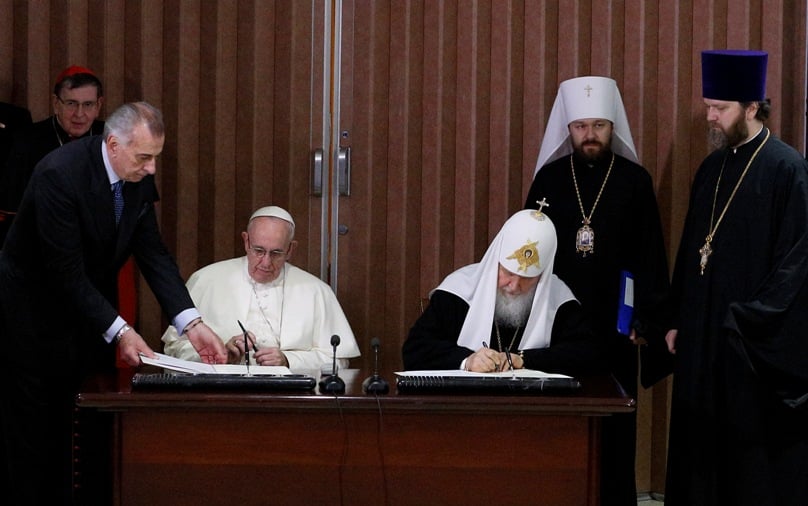
According to Boersma’s narrative, the tapestry of ideas that offered the Christian a whole sacramental cosmology starts to fray in the 11th century with the Gregorian Reforms which have the effect of overly juridicising ecclesial life. This is a point that was first made by Yves Congar. Boersma further argues that the tapestry gets more than frayed but actually cut up in the 14th century with the arrival of nominalism and the notion of the univocity of being – a point that has been made by numerous scholars including Alasdair MacIntyre, Louis Dupré and John Milbank. As Boersma very poetically expresses this principle, univocity and nominalism as two blades of the scissors that cut the tapestry. Speaking of Duns Scotus’s contribution of the univocity of being doctrine, Boersma writes:
“[St.] Thomas’s Platonic proclivities had ensured that, for him, God does not simply belong to a different category (or genus) of being than creatures do, but rather that he far transcends every category of being. The new understanding [of Scotus], by contrast, turns God into one of many categories. Second – and this point is particularly important in connection with the origin of an autonomous, de- sacramentalised realm of nature – univocity in effect renders the created order independent from God….No longer does created existence have being by participation only. Instead, the created order claims radical independence; it turns into a “discrete, secular order”….No longer are truth, goodness and beauty given with the reality of the divine Word. Instead, these universals claim independence from what had once been their Christological anchor in the heavenly places.”3
In short, Boersma reads the major problem of the Reformation as a loss of a sacramental ontology, though he argues that this de-sacramentalising of the cosmos began before the Reformation. It wasn’t Protestants who de-sacramentalised the cosmos, but Catholics. Catholic intellectuals and Catholic clergy created the crises of the 16th century.
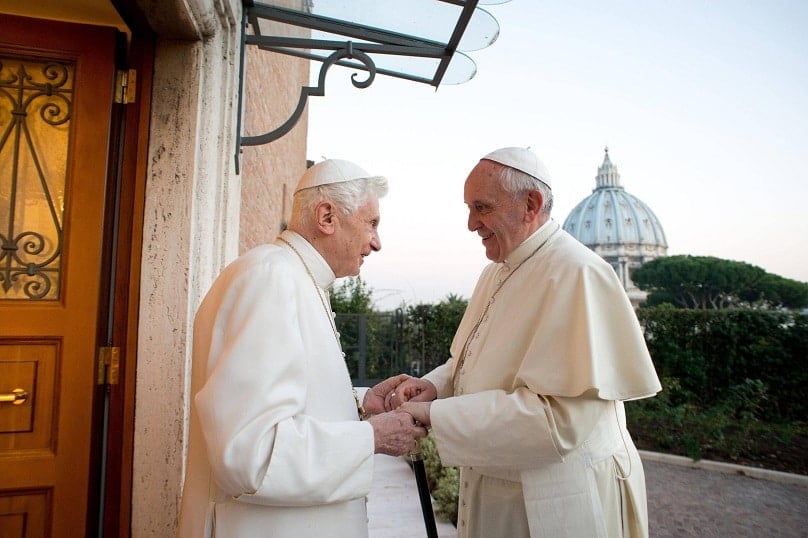
As Joseph Ratzinger acknowledged:
“[Prior to the Lutheran explosion] for nearly half a century, the Church was split into two or three obediences that excommunicated one another, so that every Catholic lived under excommunication by one pope or another, and, in the last analysis, no one could say with certainty which of the contenders had right on his side. The Church no longer offered certainty of salvation; she had become questionable in her whole objective form – the true Church, the true pledge of salvation, had to be sought outside the institution. It is against this background of a profoundly shaken ecclesial consciousness that we are to understand that Luther, in the conflict between his search for salvation and the tradition of the Church, ultimately came to experience the Church, not as the guarantor, but as the adversary of salvation.”4
Boersma’s reading of the sixteenth century (consistent with the reading of Ratzinger) is that while Catholics created the crisis, the Protestants mis-handled the crisis. As he says:
“When we look back in hindsight on the development of the Reformation, we end up with an ambivalent result. On the one hand, the Reformers were keenly aware that the Scholasticism and nominalism of the Middle Ages required adjustment. The theological reconfigurations of the Reformation also involved an attempt to reconnect, at least in some way, the threads of the earlier cosmic tapestry. On the other hand, the Reformers continued to build on some of the wrongheaded developments of the High and late Middle Ages. In particular, they were unable to break with the de- sacramentalising that was initiated by the nominalist turn of the previous two centuries. In order to reweave the tapestry successfully, the Reformers would have had to move beyond Luther’s ill-directed criticism of pagan philosophy and also beyond Calvin’s opposing of nature and grace. Most fundamentally they would have had to reassert the sacramental or participatory ontology that had characterised Western theology until at least a few centuries prior to the Reformation itself. As it is, the inability of the Reformers to reweave the tapestry led to the understandable but tragic divide that still continues to haunt Christians in the West. A successful reconnection of the threads might also lead to a genuine reconnection among divided Christians.”5
Part of the reason why Boersma likes Ratzinger and Congar and de Lubac so much is that he regards these scholars as having been across this “big picture” issue. As he puts it:
“The not so subtle message that [the ressourcement scholars such as de Lubac, Danielou and Congar] were driving home in the 1930s and 1940s was that Catholicism and the Reformation shared a common problem’6 and moreover, that ‘the vision of sacramental participation [which they sought to retrieve] was the only viable answer to the secularism of the modern age.”7
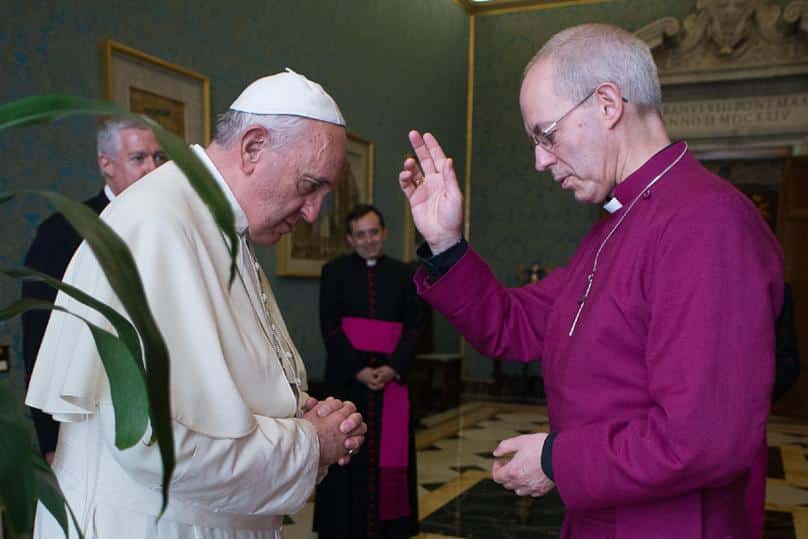
Ratzinger, of course, though younger than de Lubac, Danielou and Congar, became the intellectual heir to those in this academic milieu. In 1972 the ressourcement project of the 1930s and 1940s entered a new phase when Ratzinger co-founded the Communio journal with de Lubac and the Swiss theologian Hans Urs von Balthasar who was in his youth a student of de Lubac.
While strongly endorsing the theology of the 20th century Catholic theologians associated with the ressourcement movement, Boersma adds a few caveats: first, that a “Christian ontology must be centred on Christ”, (a proposition with which both Barthians and Balthasarians would strongly concur); second, that it dare not avoid the particularity of the visible church (which can be read as a gentle criticism of John Milbank and other Anglicans in his circle who famously skirt around this issue, and it is also a criticism of the whole Reformed tendency to emphasise the invisible Church); and third on the list of caveats is the principle that theology needs to take seriously the church’s engagement with divine revelation in Scripture. All of these propositions or caveats would find quick assent among Catholic scholars in the milieu of Ratzinger.8
Aidan Nichols in fact described the theology of Balthasar as effecting a “Christological revolution” within Catholic theology.
A re-weaving the tapestry approach to ecumenism thus takes the form of getting Catholics and Protestants to understand how the tapestry got destroyed and how it might be repaired. Some of the important ground-work for this has been undertaken by ressourcement and Communio theologians over the past 70 years with de Lubac and Congar and Ratzinger as the most luminous of the stars in these circles, but not only by them. Boersma also argues that the Caroline divines, such as Lancelot Andrews (1555-1626), William Laud (1573-1645), Jeremy Taylor (1613-1667) and Herbert Thorndike (1598-1645) should also be added to the list of those who were onto the problem, along with T. S. Eliot, Samuel Taylor Coleridge and Blessed John Henry Newman.
A fascinating doctoral topic for someone who wants to pursue it would therefore be an analysis of the relationship between the Caroline divines and the ressourcement and Communio theologians, along with the publications of an assortment of young evangelical scholars across the world who admire the theology of Joseph Ratzinger. In my travels at academic theology conferences I have heard Lutherans describe Ratzinger as a “good Lutheran lad” and I have met numerous Calvinists and Barthians who have chosen topics in the theology of Ratzinger and Balthasar for their doctoral dissertations. A common aversion to the nominalism gone mad which is the intellectual force undergirding so much of contemporary western culture is driving young Christocentric scholars from a diverse array of denominations together. As they track their way back to the 16th century to understand the cultural pathologies of the formerly Christian West they realise that the roots of our current crisis lie earlier.
Where does the Ordinariate stand in all of this?
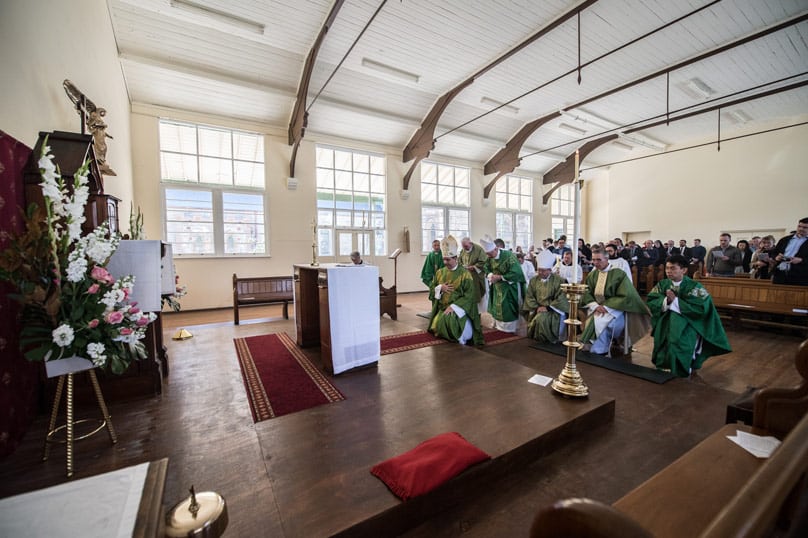
I would argue that your Ordinariate is a model example of both receptive ecumenism and re-weaving the tapestry ecumenism. In relation to receptive ecumenism the Ordinariate has brought things from which Rome might learn and has in its turn received gifts from Rome. When listing the gifts the Ordinariate has brought I particularly like what Digby Anderson called “better translations of the Mass and the moral sensibility associated with the idea of a gentleman, including the cult of self-deprecation and traditional manners”. Having been brought up by an Anglican grandmother I was taught things like “empty vessels make the most sound” and “one should never blow one’s own trumpet”. I strongly concur with Digby that the cult of self-deprecation and traditional manners is a significant gift, especially for Catholics in Australia brought up on the less genteel principle that “blood makes the grass grow” – a saying that many a Catholic teenage boy would hear from Irish brothers before running onto a rugby field. I would also add to Digby’s list an understanding of the concept of noblesse oblige and an understanding of why it is that Christian constitutional monarchies are superior forms of government to secular republics.
Members of the Ordinariate also bring to the Catholic Church an experience and painful memory of what happens to a Christian community when clerical leaders permit a widening of the gap between orthodoxy and orthopraxy. It is sometimes joked that the only moral principle upon which all members of the C of E can agree is that a failure to separate one’s recyclable rubbish from the food scrapes bin is gravely anti-social behaviour. If the only thing uniting a community is the desire for the community to hold together regardless of the actual beliefs and values of those in the community, then that community may well hold together as a mutual social welfare support service for the weaker members who rely on social welfare, but it will lose its character as a church, as an ecclesial body, and it will hold no attraction for the stronger members of the community who don’t go to Church for the free cup of tea and opportunity to pick over the goods on offer at the second-hand clothes stall. If the provision of social welfare, kindness, care and concern, rather than a common creed, becomes the glue that holds a group together, then the sacramental participation in the life of the Trinity will be very much occluded and ecclesial communities will become hard to distinguish from gatherings of secular humanists and political moralists. To Catholics who are tempted to go down that route, members of the Ordinariate can attest with some high degree of authority based on experience that it does nothing to improve the numbers of bottoms on pews on Sunday.
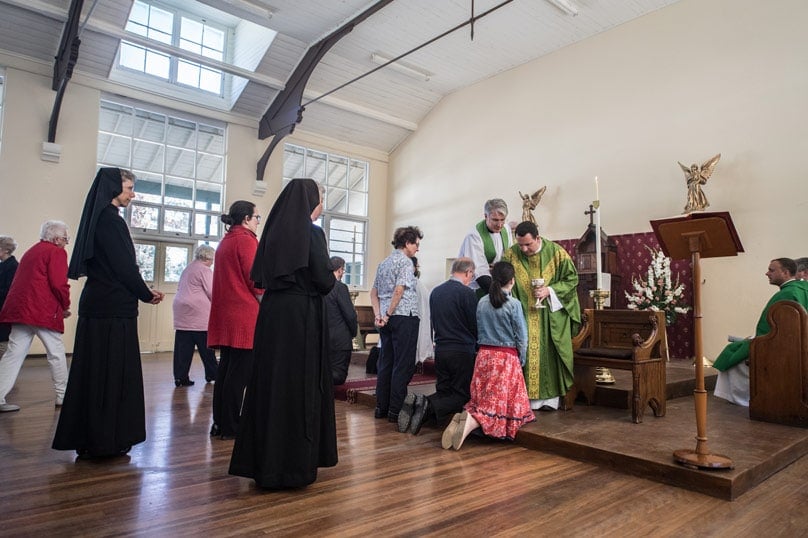
From Rome the Ordinariate initially received the gift of St John Paul II’s high sacramental theology of marriage which situates human sexuality into the context of the creative love within the Trinity. Arguably this is the intellectual antidote to the Church of England’s historic weakness in the field of moral theology. Where good and evil is concerned, the Anglican disposition of opting for the middle position is not always the best policy.
The fact that the Ordinariate has its own Divine Worship books is an assurance that the English heritage will be respected, that the principle of “unity with distinctiveness” which avoids absorption will prevail. However realised ecumenism does not allow for unity of communion without unity of faith. The Ordinariate can therefore be a model of receptive ecumenism morphing into a realised ecumenism insofar as its members become the purveyors of both transcendent liturgical worship and sound catechetical preaching.
The Ordinariate is not however merely a model of successful receptive ecumenism, it is also potentially a model of re-weaving the tapestry ecumenism. Running through the tapestry as a central thread is a Christocentric Trinitarian sacramental theology that finds its highest expression in the liturgy. While common garden variety Catholics are re-weaving parts of the tapestry by recourse to the theological work of the ressourcement scholars, Ordinariate Catholics can help to re-weave other bits of the tapestry by recourse to the works of the Caroline Divines, members of the Oxford movement and writers like Coleridge and T. S. Eliot.
So far in my paper I have addressed the topic of ecumenism with reference to the historic splits of the 16th century. Of course there were also earlier tragic divisions with the Orthodox Churches of the East. Obviously different issues and principles apply in this context. Here Ratzinger offered as a general principle the idea that Rome must not require more from the East with respect to the doctrine of papal primacy than had been formulated and was lived during the first millennium; while the churches of the East should cease to oppose as heretical developments that took place in the Western branch of Christianity during the second millennium. He added that there is in addition the problem of the Filioque in Trinitarian theology and the question of the indissolubility of marriage in sacramental theology.
Of these last two issues, the Filioque problem appears to be close to a resolution, relying on a mutual acceptance of the trinitarian theology of St. Maximus the Confessor. A study published by the Pontifical Council for Promoting Christian Unity – on The Greek and the Latin Traditions regarding the Procession of the Holy Spirit, distinguishes between what the Greeks mean by ‘procession’ in the sense of taking origin from, applicable only to the Holy Spirit relative to the Father, and what the Latins mean by ‘procession’ as the more common term applicable to both Son and Spirit. This preserves the monarchy of the Father as the sole origin of the Holy Spirit while simultaneously allowing for an intra-trinitarian relation between the Son and Holy Spirit that the document defines as ‘signifying the communication of the consubstantial divinity from the Father to the Son and from the Father through and with the Son to the Holy Spirit’.
Metropolitan John Zizioulas, while maintaining the explicit Orthodox position of the Father as the single origin and source of the Holy Spirit, has declared that this recent document of the Pontifical Council for Promoting Christian Unity shows positive signs of a way towards reconciliation. The problem is therefore on its way to being sorted at the intellectual level, though on the political level there is still probably a way to go.
In his book Rome and the Eastern Churches Aidan Nichols offers a whole chapter on the history of the filioque dispute and an analysis of the options open for its resolution. In this he makes the interesting observation, following a comment by Professor Henry Chadwick, that if the Catholic Church removes the word filioque from the Creed on the grounds that it offends Orthodox sensibilities, this would mean that overnight whole settings of the Creed by musicians such as Bach, Mozart and Palestrina would no longer be usable.9 It would be far easier to get the Orthodox to accept that they can nuance the word filioque according to the theology of Maximus and get the Western Church to lift the ancient anathemas against those who object to the word ‘filioque’.
The second issue flagged by Ratzinger, that of the theology of marriage operative in the Orthodox Churches, is obviously a much bigger can of worms. My hope would be that the principles of receptive ecumenism might apply in this context in such a way that the very rich theology of marriage that was a core project of the pontificate of St John Paul II might inspire a generation of Orthodox theologians. John Paul II’s Christocentric Trinitarianism and especially his attempt to develop a catechesis on human love which situates the whole phenomenon of human love and sexuality within a Trinitarian context, may well start to resonate with Orthodox theologians since a hallmark of Orthodox theology for centuries has been precisely their focus upon the Trinity. It is also significant, in the context of ‘re- weaving the tapestry’ ecumenism that one of the sources of inspiration for the theology of the Yves Congar was his conversations with Orthodox theology professors from the Saint-Serge Institute in Paris, including Georges Florovksy and Sergei Bulgakov. Young Catholic and Reformed-evangelical scholars who are contending with the implosion of Western Christianity may well find that they have much to learn from the Slavophile intellectual tradition while the Slavophiles might find the ideas of a Polish philosopher with a strong interest in Trinitarian anthropology to be a much needed supplement to their own already rich understanding of the significance of the Trinity in human life.
I wish to conclude by referring to my favourite academic discovery of last year which was the short story ‘The Treading of Grapes’ by the Orcadian writer George Mackay Brown. The story takes the form of three homilies delivered on the theme of the Wedding Feast of Cana. In the first homily, delivered in 1788 by a Presbyterian Minister, every kind of human pleasure was criticised from wine to party dresses. The Presbyterian Minister used the account of the miracle of Cana to upbraid his flock for drinking too much at weddings and spending too much money on fine clothes. He even compared their enjoyment of beer to piglets sucking on the teats of a sow. The second homily is delivered in the twentieth century by a trendy liberal type of cleric who uses the opportunity to explain that Jesus didn’t really turn water into wine. There was no miracle. Jesus was simply a good organiser who knew that his apostles were big drinkers.
Unless he took behind the scenes measures to ensure extra supplies of wine for his thirsty entourage, the host of the wedding could have found himself embarrassed. Jesus was a responsible person – a forward planner, and so we should all follow his example and be forward planners and try to arrange our affairs in such a way that others are not inconvenienced. Finally, one is treated to a homily by a Catholic priest delivered in 1548. Rather than being critical of the joys of life (such as beer, wine and elegant clothes) or denying the reality of miracles, the priest tells his congregation that at the wedding feast of the Lamb (of which Cana is merely a foreshadowing) they will all be princes. Therefore, he says, I will call you Olaf the Fisherman and Jock the Crofter no longer but I will call you by the name the Creator will call you on the last day – Princes! Prince Olaf! Prince Jock! etc. His message was that within a sacramental cosmos not only is it possible for Christ to turn water into wine, but He can turn wine into blood and raw human beings into saints and members of a Royal priesthood. This is, I think, the whole point of the sacramental ontology tapestry around which Orthodox Christians who live to the east or south of Vienna, Reformed evangelicals who trace their history to the explosion of protests over the state of the Church in the sixteenth century, Christocentric Catholics who believe in the normativity of Scripture and members of the Ordinariate can rally in these particularly dangerous times for those who believe in the divinity of Christ.
NOTES
1 Hans Boersma, Heavenly Participation: the Weaving of a Sacramental Tapestry (Grand Rapids: Eerdmans, 2011), 24.
2 Ibid, 10.
3 Ibid, 76.
4 Joseph Ratzinger, Principles of Catholic Theology (San Francisco: Ignatius, 1987), 196.
5 Hans Boersma, op. cit. 94.
6 Ibid, 66.
7 Ibid, 16.
8 Ibid, 21.
9 Aidan Nichols, Rome and the Eastern Churches (Collegeville, Minnesota: The Liturgical Press, 1992), 220.
